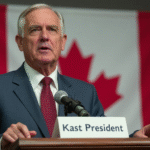Introduction to Market Anomalies and AI’s Impact
Economist Olivier Blanchard recently pondered over three seemingly contradictory market phenomena observed in the first half of the year: a 14% rise in the S&P, a decrease in 10-year Treasury bond yields from 4.6% to 4.1%, and a surge in gold prices. These unusual trends among indicators typically reflecting analysts’ and investors’ expectations have led Blanchard to propose the rapid growth of artificial intelligence (AI) as a possible explanation, driven by both anticipated future growth and the uncertainty it introduces.
AI: From Promise to Present-Day Reality
Artificial intelligence is no longer a distant prospect; it’s now a transformative force reshaping the operations of hundreds of companies. More crucially, investment in AI-related data centers is fueling the growth of the world’s largest economy, the United States, potentially creating the biggest bubble we’ve ever witnessed. As Derek Thompson describes, the boom in AI-focused data centers could mirror past tech bubbles like the U.S. railroad expansion in the 19th century or the fiber-optic and telecommunications boom at the turn of the millennium. Both were highly successful infrastructural developments that revolutionized the world, yet inevitably led to bubbles due to their nature.
Risks and Potential Market Correction
The magnitude of investment in AI infrastructure introduces a potential risk of overcapacity and market correction, a phenomenon observed during previous tech booms. From a capital allocation perspective, this situation resembles the 19th-century U.S. railroad boom and the late-1990s fiber-optic development. In both cases, growth expectations exceeded actual revenue realization, leading to overbuilding and subsequent devaluation of these assets. If AI’s profitability and productive adoption don’t scale at the anticipated rate, the massive capital committed to data centers and hardware may prove excessive. A correction in this investment, given its current weight on GDP, could have detrimental effects on overall economic growth.
Uncertain Impact on the U.S. Economy and Beyond
It remains to be seen whether this AI-driven bubble will impact the U.S. economy and, consequently, the global economy. While signs suggest it will, definitive answers may take years to emerge. What is certain, however, is that this infrastructure will influence the global economy’s productivity, though its exact effects remain to be seen.
Key Questions and Answers
- What are the market anomalies Olivier Blanchard is referring to? Blanchard observed a 14% rise in the S&P, decreased 10-year Treasury bond yields from 4.6% to 4.1%, and a surge in gold prices, which are unusual trends among indicators typically reflecting analysts’ and investors’ expectations.
- Why is AI considered a significant factor in these market anomalies? The rapid growth of AI, with its potential for future economic expansion and the uncertainty it introduces, is proposed by Blanchard as a possible explanation for these contradictory market trends.
- What are the risks associated with the current AI investment boom? The massive investment in AI-related data centers introduces a potential risk of overcapacity and market correction, similar to past tech booms.
- How might the AI investment bubble affect the global economy? The impact of this potential bubble on the U.S. and global economies remains uncertain, though its effects on global productivity are expected to be significant.






